The Rift Read online
The characters and events portrayed in this book are fictitious. Any similarity to real persons, living or dead, is coincidental and not intended by the author.
Text copyright © 2014 by Bob Mayer
All rights reserved.
No part of this book may be reproduced, or stored in a retrieval system, or transmitted in any form or by any means, electronic, mechanical, photocopying, recording, or otherwise, without express written permission of the publisher.
Published by 47North, Seattle
www.apub.com
eISBN: 9781477868119
Cover design by Brian Zimmerman
Library of Congress Control Number: 2013953508
PROLOGUE
CHAPTER 1
CHAPTER 2
CHAPTER 3
CHAPTER 4
CHAPTER 5
CHAPTER 6
CHAPTER 7
CHAPTER 8
CHAPTER 9
CHAPTER 10
CHAPTER 11
CHAPTER 12
CHAPTER 13
EPILOGUE
AUTHOR’S NOTE
ABOUT THE AUTHOR
ALSO BY BOB MAYER
On August 21, 1945, Harry K. Daghlian was stacking blocks just fifteen days after the bomb they’d put together at Los Alamos blew the dragon’s breath onto Hiroshima and twelve days after Nagasaki received the same fate.
Enrico Fermi called what Daghlian was doing “tickling the dragon’s tail.”
He had no idea how right he was.
On this day, Daghlian dropped a block.
Everyone has dropped something. Sometimes one hits the big toe and hops about and curses. Sometimes the thing dropped breaks. Unfortunately, the blocks Daghlian was stacking and what he was stacking them around were both rather unusual.
Rarely does the thing dropped kill, but when connected to the dragon, nothing good can happen. Daghlian was part of the Critical Assembly Group and was attempting to build a neutron reflector by arranging bricks of tungsten carbide around a plutonium core, trying to achieve criticality.
He was moving the last brick into place—sort of like how one should never do the last run on the ski slope, except a lot more dangerous—when the neutron counters in the room went off, alerting him that the last brick would be a mistake. What physicists call going supercritical and laymen call a “big oops.”
As Daghlian withdrew his hand, he dropped the brick.
This caused the core to go into what’s technically called “prompt critical region of supercritical behavior resulting in a power excursion” and what laymen would call “oh shit.”
Give him credit. Daghlian didn’t run away. He didn’t spin in circles and scream and shout. He attempted to knock the dropped brick off the pile.
Without success.
He then stuck to the job and began disassembling the pile to halt the reaction. He managed to do so and in the process received an estimated dosage of 510 rem.
He was dead twenty-five days later.
Exactly nine months later to the day, as if Daghlian’s death had conceived and was giving birth, another scientist working on the exact same core, in the exact same room, poked the dragon’s tail with a screwdriver.
Scientists.
He’d been warned. After they buried Daghlian, everyone muttering proud words at the funeral service and remembering the good times building the atomic bombs, Fermi looked Louis Slotin in the eye and told him, “Keep doing that experiment, tickling the dragon’s tail that way, and you’ll be dead within a year.”
For a betting person, anyone who took the under of three months from the year made a lot.
In front of seven of his fellow scientists, Slotin was maneuvering two half-spheres of beryllium around the same plutonium core. He had his left hand on one of the half-spheres, with his thumb in a hole drilled into the top and a screwdriver in his right, which he was using to keep the two half-spheres apart.
He’d removed the safety shims that usually did that.
They’re called safety shims for a reason.
He didn’t drop the half-sphere in his left hand. He missed with the screwdriver in his right, the blade slipping and allowing the two halves to touch, ever so briefly. Slotin flung the half in his left hand to the ground, but the damage had been done.
Everyone in the room saw a blue glow, an indication of the air in the room being ionized. They were all washed by the dragon’s breath, a blast of warm air, also known as radioactivity. Slotin’s hand was burned and he had a strange taste in his mouth, as if he’d swallowed something sour. In fact, his entire body had absorbed something deadly. As his colleagues hustled him from the lab, he began vomiting.
That was just the beginning of the bad. While Daghlian had died in a coma, Slotin wasn’t so fortunate. Over the next nine days, his body disintegrated until death brought a merciful end.
Two days after Slotin died, a convoy of heavily armed army vehicles pulled up to the front gate of Los Alamos. The base had the highest security clearance possible, given it headquartered the Manhattan Project, so it was rather amazing that the leader of the convoy could produce paperwork that cleared that high hurdle and the vehicles were allowed access.
The men inside the convoy were dressed in army fatigues but had no rank, no names stenciled above their breast pockets, no unit insignias. They just carried weapons in a way that indicated everyone was a hardened combat veteran looking for an excuse to use those weapons. They seemed to have a particular dislike for scientists.
The convoy drove straight to the lab.
Fermi was waiting outside, having been alerted by the gate guards.
“Might I help you?” he inquired of the hard-looking, gray-haired man who led the phalanx of soldiers to the door of the lab. A scar crossed the man’s face from above his left eye to the right of his chin. It made his smile look terrible, but since he didn’t smile, it didn’t matter. He wore aviator sunglasses, hiding his eyes from not only the sun but also everyone else. A set of pilot’s wings adorned his chest.
“My name is Thorn. Colonel Thorn.”
“And what can I do for you, Colonel Thorn?” Fermi asked. “The guards said you had authorization directly from the White House to access the base. I called Washington and that order was verified.”
“I want the plutonium core that killed Daghlian and Slotin.”
Fermi didn’t budge. “Why?”
“Because you idiots play with things you don’t understand.”
Fermi raised an eyebrow. “And you do?”
Thorn removed his sunglasses, revealing dead eyes. “We like to keep people alive.”
“We understand what we’re doing here,” Fermi said. “We developed the bombs that ended the war. You do remember that they worked.” It was not a question. The entire world knew that Little Boy and Fat Man worked.
“And two of your people killed themselves playing around with that core.” Thorn reached into his breast pocket and pulled out the same sheet of paper he’d shown the gate guards. “I have the authorization to take the core.”
Fermi reached out to take the paper, and for a moment Thorn didn’t let go. Then he released and Fermi put on a pair of reading glasses and scanned the document.
“What is this Majestic-12 organization?” Fermi asked.
“You don’t need to know.”
“Where is Area 51?”
“You don’t need to know.”
“Who exactly are you and your men?”
“You don’t need to know.”
Fermi took off the reading glasses and hand
ed the paper back. “Do you have the proper facilities to store the core?”
“We do.”
“Do you have scientists who understand what they’re dealing with?”
A grimace flickered for the slightest of moments on Thorn’s rough visage. “We do.”
Fermi frowned. “We have the best physicists in the country here. Who do you have?”
“You ask too many questions,” Thorn said. “I’m taking that core. We can do it easy or we can do it hard, Professor. My men would prefer hard. Personally, I like it easy.” That was such a blatant lie that even Fermi—a scientist, not someone skilled in the subject of psychology—could read it. Thorn was itching for the hard way.
Fermi stepped aside. “It is all yours, then, Colonel.”
Thorn waved and his men went into the lab, rolling a large lead box they’d taken off a specially built truck. A cluster of guards, weapons at the ready, surrounded them.
“A bit overly dramatic, don’t you think?” Fermi observed.
“No.”
“The guards, not the box,” Fermi said.
“Protocol is important,” Thorn said. “Didn’t Slotin violate protocol by removing the shims?”
Fermi had no response to that.
After several minutes the men reappeared, rolling the box down the short ramp to the truck, muscles straining to control the weight.
“By the way, Colonel Thorn. Do you know what we call what you’ve just taken?” He indicated the large lead box the men were now maneuvering onto the truck.
Thorn had put his sunglasses back on, hiding his eyes. “I figure you’re going to tell me, so go ahead.”
“The demon core. Beware of tickling it.”
Roland stood on the open back ramp of the Snake, fifteen thousand feet above St. Louis, as calm as if he were waiting in line at Pottery Barn. Of course, Roland had no clue what a Pottery Barn was, but if one mentioned the term to him, he would deduce that it had something to do with a recurring fantasy about fine china and a bull, which was pretty much the definition of Roland—the bull part. Roland was six-four and two hundred forty pounds of muscle, bone, and pure killer. He had a scar running along the right side of his head, starting from his temple and curling behind his ear. On his last trip to Vegas, he’d had it tattooed with barbed wire, which earned him a big-time ass-chewing from Moms, because Nightstalkers weren’t supposed to have tattoos (the body could be identified), but in this case Ms. Jones intervened because the tattoo actually sort of hid the scar, which had been more noticeable than the black ink covering it and raised more questions.
And Roland was noticeable no matter what was on his skin.
The Snake was at fifteen thousand above ground level (AGL), because any higher and everyone inside would have to be on oxygen. As it was, the breathing was hard for normal people, but the people inside were anything but normal.
They were the Nightstalkers.
The best of the best, the cream of the crop, the tip of the spear, et cetera, et cetera, so secret they even wondered if they existed, in their more existential moments, of which there weren’t many, except when Eagle, the pilot, got to thinking.
“There’s a lot of lights,” Roland observed, looking down.
“It’s a city,” Mac said, as if talking to a three-year-old, which is the way Mac talked to Roland pretty much all the time, except in combat, when Roland was everyone’s best friend. “A big city.”
“I know it’s a city,” Roland muttered. “But it’s three in the fraking morning.”
The team had recently done a Battlestar Galactica marathon in the Den, buried underneath the Ranch outside of Area 51, and frak was now the buzzword, as Moms frowned on cussing. They had adopted it as adjective, adverb, verb, noun, and simple exclamation. It had caught on with some, but not all.
“Two minutes,” Eagle announced from the cockpit.
Roland took a short step closer to the ramp. Moms came up and ran her hands lightly over his rig, doing a last-minute jumpmaster parachute inspection (JMPI), redundant, not needed and not Protocol, but Moms always checked Roland before a jump. Tradition trumped Protocol sometimes. She slapped him lightly on the shoulder and gave him a thumbs-up.
Roland blushed, because he always blushed when Moms paid him special attention. It wasn’t a sexual thing but a deep and abiding affection, much like a Doberman for its owner, because Moms had once saved his life in combat and for Roland there was no deeper love than that of combat.
Roland had concocted a unique rig for this jump and he was overly excited about trying it out, even though there was a good chance he was jumping into a real-world equivalent of the Hellmouth. (They’d tried a Buffy marathon, but only Roland had wanted to see it through; that was ’cause he had immediately identified Buffy with Moms. The Nightstalkers dealt with things that made vampires look tame, so the rest of them felt the show was kind of lame.) Roland had done thousands of jumps in many different configurations and situations, but this one was unique even for him. The prospect of a combination of an aircraft free-fall jump directly to a landing, where he would then do a BASE jump tickled his tiny, tiny imagination—or so Mac had said as Roland had prepped.
Roland, as usual, had ignored his poking.
“It is a city,” Nada said, his voice, more a growl, coming into each team member’s earpiece. “Even at three in the morning there’s likely to be civilians. We’ve got Support en route, but as always, we’re on our own for a bit. Remember—containment, concealment, and control. And the local law is as dangerous as anyone else because they give those people guns, even though most of them shouldn’t have one.”
A couple of the Nightstalkers exchanged glances, because those three C words were their mantra and deeply imprinted in each of their brains. For Nada to feel he needed to repeat them reminded them not only of the mantra, but also that things had been a bit frayed in the past year on various missions.
“One minute,” Eagle said.
“Doc?” Moms asked.
Doc was staring at his laptop screen, his forehead furrowed above his thick glasses. “A Rift is indeed forming. But different.”
“Not much help,” Nada said. “Different how?”
“Bigger.” Doc looked up. “Someone’s using the Gateway Arch to make a Rift.”
“Frak,” Mac said, vocalizing what every Nightstalker thought at the moment.
“You know,” Eagle said over the net, “the guy who designed the Arch said it symbolized, and I quote, ‘the gateway to the west, the national expansion, and whatnot.’”
“Looks like we’re heading for the whatnot,” Kirk, the team’s commo man, observed.
Moms began chanting Warren Zevon’s “Roland The Headless Thompson Gunner,” and the team picked it up.
“Go!” Eagle ordered from the cockpit.
Roland stepped off into the glowing darkness above St. Louis. In his earpiece he could hear the team finish the second line of the song.
He wished he had a Thompson gun, with its big .45-caliber slugs. He spread his arms and legs, got stable, then pulled the rip cord. The opening shock jerked him upright, and he looked up to make sure he had good canopy while he grabbed the control toggles for the chute.
Then he looked down.
“Oh, yes, yes, yes!” It could have been the soundtrack for a porn movie, except the young woman exclaiming the words was fully clothed, sitting cross-legged in the grass, had a laptop on her knees, and was watching six different data boxes on it.
We all get our kicks different ways.
She was so focused on the data that she was missing the real show. The Gateway Arch towered 50 feet in front of her, 630 feet high and 630 feet wide, making it the tallest memorial in the United States and the tallest stainless steel structure in the world. It had been dedicated in ’65 and opened to the public in ’67, not the greatest decade to celebrate t
he westward expansion of the United States, as the country was embroiled in an unpopular war abroad and unrest at home.
At three in the morning, the woman had the park to herself, which is why she’d picked three in the morning to run her test. The numbers and indicators on her laptop screen showed that the program she’d started two hours ago was reaching culmination. She was completely unaware that the initiation had also set off flashing lights and a loud clicking alert deep underneath Area 51 in the Can, and that was why the Nightstalkers were descending from above like avenging angels or, as Mac said in his grumpier moments, flying turds, especially with regard to Roland, the largest turd of them all according to Mac.
He never said it within earshot of Roland, though, because Mac had an innate survival instinct.
A single thin cable ran from the USB port of her laptop across the grass and was attached to the left leg of the Arch with a magnet.
As with most of the scientists the Nightstalkers ended up dealing with, she thought she knew what she was doing.
As with most of the scientists the Nightstalkers ended up putting in body bags or more likely listing as MIA, she really didn’t.
A crackling noise caused her to finally look up. Her mouth dropped open and she couldn’t even moan her excitement anymore. The entire interior of the Arch was flickering, a slightly golden sheen illuminating the space framed by what Eagle could have told her was a weighted catenary form of stainless steel. Eagle could have even gone into the math involved, something to do with x and y and cosines and fractions and whatnot, but that wasn’t what Melissa Eden was interested in, even though she was very good at math, having earned a PhD in physics from Stanford, which required more than a few math courses along the way.
Just as quickly as she’d seen it, the gold coalesced inward from the metal arch to a single tiny, golden, glowing arch, about ten feet wide and high, in the exact center on the ground.
It wasn’t a sign for McDonald’s.
Eden felt the hairs on her arms tingle and there was another crackling sound. She had a sour taste in her mouth. She squinted, because through that small arch, there was something, like there was another side, which was the whole point of this experiment, except even in her most excited dream, she’d never really imagined it would work. Because no one had ever published on it, saying they had succeeded.

 Independence Day
Independence Day Invasion
Invasion Chasing the Ghost
Chasing the Ghost Hallows Eve
Hallows Eve New York Minute
New York Minute Valentines Day
Valentines Day Eyes of the Hammer
Eyes of the Hammer Walk on the Wild Side
Walk on the Wild Side D-Day
D-Day Lawyers, Guns and Money
Lawyers, Guns and Money Z: The Final Countdown
Z: The Final Countdown Redemption: Area 51, #10
Redemption: Area 51, #10 Time Patrol
Time Patrol Interstellar
Interstellar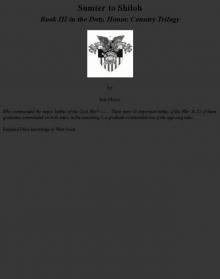 Sumter to Shiloh
Sumter to Shiloh Dragon Sim-13
Dragon Sim-13 The Line
The Line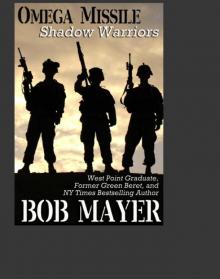 Omega Missile (Shadow Warriors)
Omega Missile (Shadow Warriors) The Rift
The Rift The Jefferson Allegiance
The Jefferson Allegiance Project Aura
Project Aura Synbat
Synbat Ides of March (Time Patrol)
Ides of March (Time Patrol) Nightstalkers a5-10
Nightstalkers a5-10 Lost Girls tc-2
Lost Girls tc-2 West Point to Mexico
West Point to Mexico Mexico to Sumter
Mexico to Sumter Area 51_Invasion
Area 51_Invasion Eternity Base
Eternity Base The Line bo-2
The Line bo-2 Atlantis Gate
Atlantis Gate I, Judas
I, Judas Area 51_Redemption
Area 51_Redemption Bodyguard of Lies
Bodyguard of Lies Cut Out
Cut Out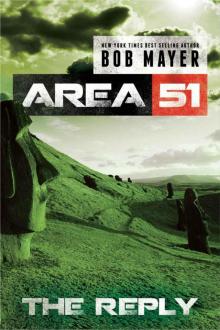 The Reply (Area 51 Series Book 2)
The Reply (Area 51 Series Book 2) Synbat tgb-3
Synbat tgb-3 The Book of Truths a5tn-2
The Book of Truths a5tn-2 Eyes of the Hammer (The Green Beret Series)
Eyes of the Hammer (The Green Beret Series)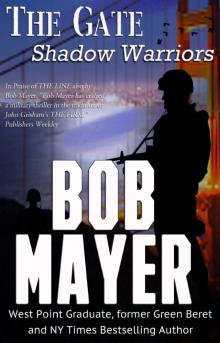 The Gate
The Gate The Gate bo-1
The Gate bo-1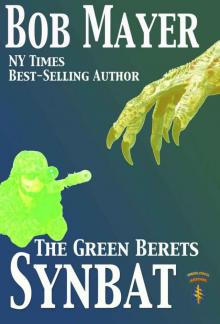 Synbat v5
Synbat v5 Omega Sanction
Omega Sanction Z
Z Chasing the Son
Chasing the Son Nightstalkers
Nightstalkers The Book of Truths
The Book of Truths Dragon Sim-13 tgb-2
Dragon Sim-13 tgb-2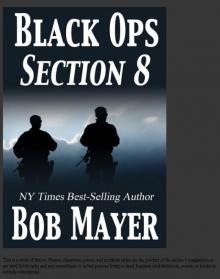 Section 8
Section 8 Chasing the Ghost v5
Chasing the Ghost v5 Psychic Warrior
Psychic Warrior Chasing the Lost
Chasing the Lost The Kennedy Endeavor (Presidential Series Book 2)
The Kennedy Endeavor (Presidential Series Book 2)